Were you ever held back in school? Forced to live with your parents for longer than you wished? Or exiled to the dreaded “bench”, while you watched your teammates blossom into triumphant sports players? It can be a blow to feel like everyone is moving up in the world, as you’re left trailing behind. Maybe that’s the case of your company today, and you haven’t realised it yet.
The Marketing Execution Gap is a phenomenon that leaves brands trailing behind. It forms when marketing and creative teams cannot keep up with the growing demand for content, as their resources and budget have not yet adjusted to the changing times and the changing consumer.
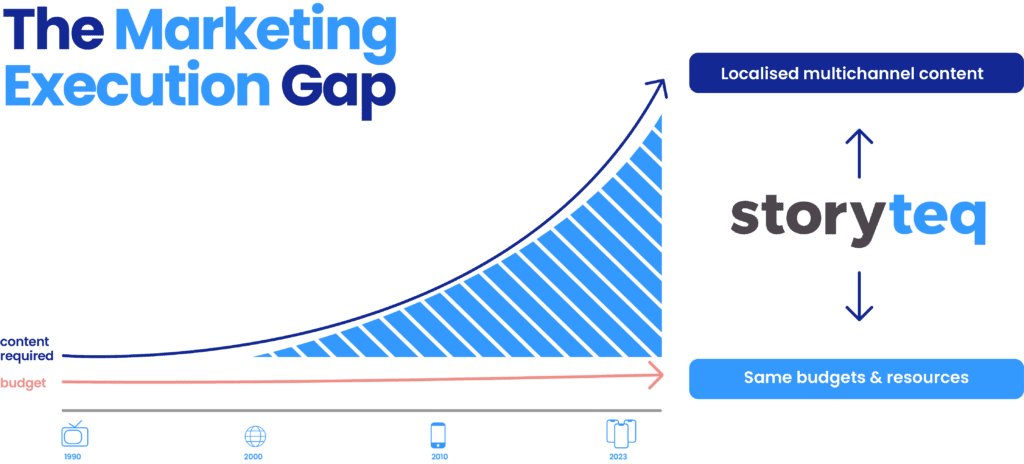
So, who is the changing consumer?
How the Marketing Execution Gap emerged
Think of your average household. Let’s imagine four people.
- Dad is a YouTube DIY tutorial fanatic
- Mum is addicted to trashy daytime TV
- College-going daughter waits for her bus one day and gets a thirst seeing the new Fanta flavour displayed at her bus shelter
- Teenage son clocks up hours on TikTok daily
- Combined, they may watch up to 40,000 ads a day while interacting with these various advertising platforms
- Such households exist across the world, and for global brands, that means this challenge is further impacted by the need to create content in other languages with the appropriate cultural context too
We live in an era of “more”. More content, for more platforms, to more diversified audiences, supporting more advanced media. The stakes for advertisers are high, because competition is high. Grabbing and holding the attention of a potential customer who is routinely bombarded with thousands of messages is an ambition of considerable proportions. The distracted audiences of today are far less predictable.
This means that what worked before no longer cuts it in this global economy, because it prevents companies from gaining any reach.
The more traditional approach to creative operations includes:
Siloes
Physical and organisational silos equal inefficiencies. This is because of multiple avenues that are used to communicate and collaborate, further compounded by a lack of one source to determine what is to be done and with what creative assets. Cue an exhausting and needless back-and-forth.
Manual creative adaptation
More content is needed which must also be localised and personalised to cut through the noise of an oversaturated ad space. The recurring low-level task of adapting this content to produce volume is something creative minds are repeatedly tasked with. This is the antithesis of creativity.
Decentralised operations
Global companies have little control over what is produced in all their regions. The Chief Marketing Officer (CMO) hands over campaign execution to individual branches as they can better achieve the local nuance necessary for those audiences. However, budget and human resources are wasted when campaign assets are recreated locally from scratch, significantly slowing down the time to market.
Content, not data, is the bottleneck of personalisation at scale. But as the many advertising conditions grow, multiplying the demand for creative assets, brands are doing little to adapt to this problem that affects their end-to-end content marketing operations.
As the next section will show, it is not only the lack of a system for scaling content creation that contributes to the Marketing Execution Gap. Other limiting factors for a brand’s success fall under processes, people, technology and budget.
Why are brands failing to deal with the Marketing Execution Gap?
Process
Siloes, complex workflows or different styles of working (whether in-house or between agencies) can slow down operations massively as clarity around a project or creative asset is sought on different platforms in different regions.
Imagine:
You’re a global CMO, yet you have no knowledge of what stage campaigns are at in your other markets. You trust your local marketers to report back accurately but know that you need more visibility in order to better align timelines and assess budget estimates. You’re feeling a lack of control.
Or, you’re in a team of creative designers, but instead of the marketers you work with commenting directly on video scenes or images with the changes they desire, you are back-and-forth between a messaging app and apply what’s needed. It’s cumbersome.
People
People should be a company’s most valued resource, so using creative talent for automatable or non-essential tasks such as creative asset adaptation is a waste. Manually making the creative iterations or variations is repetitive and monotonous, but also a slow course for producing volume.
Imagine:
You’re a creative person who trained long and hard to hone your craft, but in your job you feel like you’re tasked with drudgery day after day: “Give me this same ad, but localised for X, Y and Z markets… Change the colour of the packaging here… Place the logo on the opposite side…” You’re fed up and thinking about finding more inspiring work elsewhere.
Technology
Disparate and numerous platforms are under use simultaneously, causing confusion which can lead to brand errors. Additionally, companies spend substantial amounts on these different tools which are high maintenance.
Imagine:
As a marketing manager, you’re frustrated that when you supply a campaign brief by email, the creative lead asks a question regarding budget over Slack, before assigning their team various creative adaptation tasks on Jira. Finally, you distribute the finalised creative assets through another system. You know there are bound to be crossed wires due to the lack of unified system. One platform with all these capabilities as native would make lives easier, while also ensuring everything runs according to plan.
Profit
Without rigorous structures in place for your end-to-end content marketing operations, budget is almost guaranteed to be misused or incorrectly estimated. Whether it entails adding more headcount to your teams or investing in more discrete MarTech that require integrations, these expensive measures only temporarily fill the gap.
Imagine:
In a local branch of a global company, both marketing and creative teams agree that none of the assets stored in your company’s Digital Asset Management system are usable in your market, for local interpretation. The same human energies, money and time are therefore invested in recreating a similar campaign from scratch. Different entities within a brand are back and forth often to get a clear picture on what needs to be produced, before reaching out and waiting on sign-off. Going to market is slow and creative control is lacking on all sides. You’re spending more but getting less.
And this is before any budget is put aside to test the impact of these campaigns. Producing the minimum content needed leaves little budget to invest in testing and data-driven decision making, which inevitably leads to missed ROI.
What are the most common band-aid solutions used to remedy the above flaws in marketing operations?
> Investing in more marketing technology
> Outsourcing work to agencies or freelancers
> Adding headcount
Temporary solutions which fail to address the root of the problem only prolong a trajectory of precarious revenue and poor Return on Ad Spend (ROAS). Would you simply continue to stock up on paracetamol if you were burdened daily with headaches?
These approaches merely tweak, they don’t transform.
A Content Marketing platform transforms.
What is a Content Marketing platform?
Brands need to break away from legacy thinking and urgently revisit their entire campaign operations. A game-changing technology embedded in a powerful MarTech ecosystem bridges the gap: it’s called a Content Marketing platform. Gartner defines Content Marketing platforms (CMPs) as software solutions that support the practice of content marketing
Our definition goes a little further:
A Content Marketing platform is a technology solution or software tool that enables marketing and creative teams in businesses to manage and streamline their marketing efforts end-to-end, from conceptualising ideas to creative production to campaign activation. It provides a centralised hub for content creation and collaboration, marketing automation and content analytics.
The goal of a content marketing platform is to help businesses improve the efficiency and effectiveness of their content marketing strategies, by providing a solution that can support the entire content lifecycle.
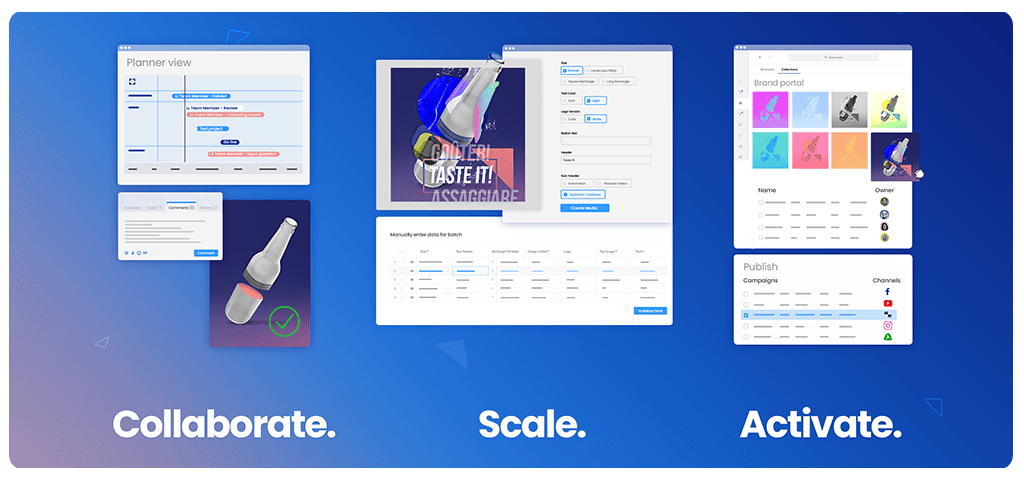
The benefits of a Content Marketing platform can be boiled down to:

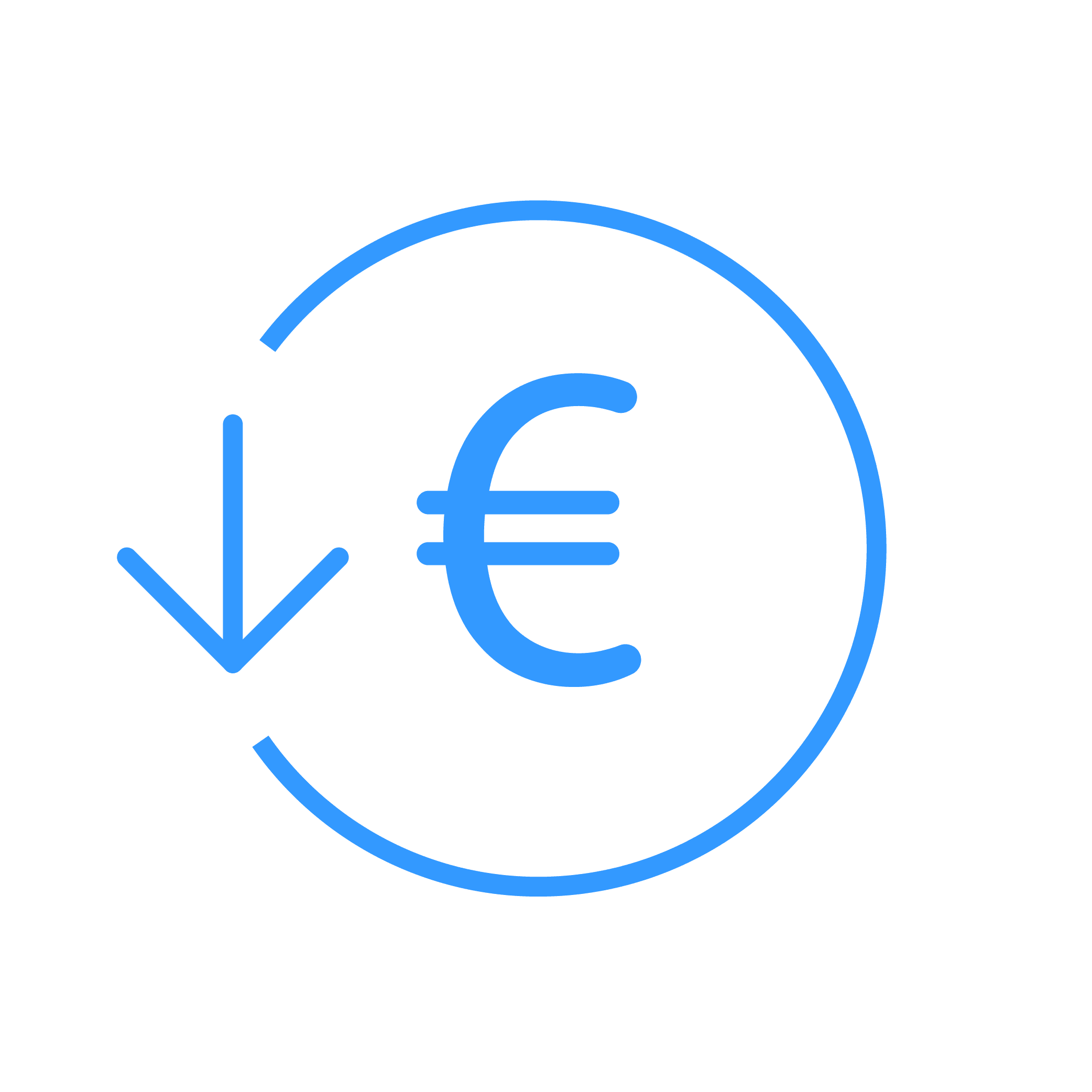

Let’s dive into how a Content Marketing platform can reap these benefits.
Collaborate with Workflow technology
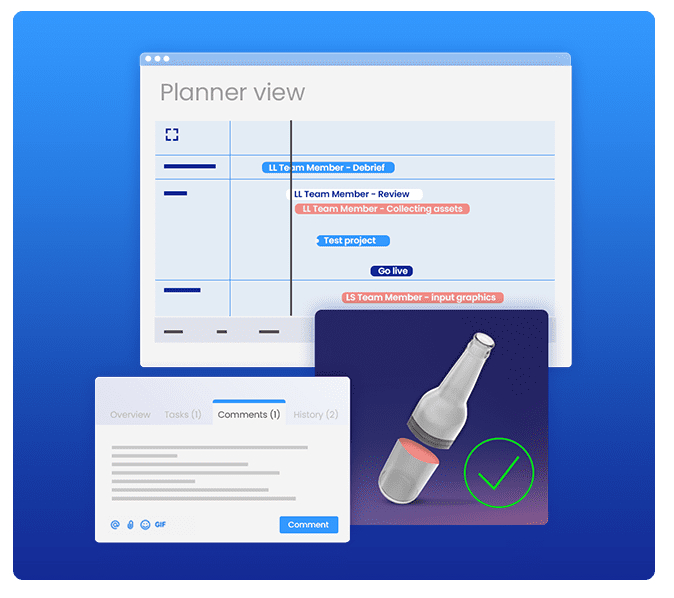
Marketing today functions in a globalised world, where a company’s teams can be widely dispersed.
With Workflow Management technology, workflows can be optimised across brands, teams and agencies. Managing workflows in digital marketing means that campaign planning is improved and expedited. That is because resources which keep a campaign within budget and on-brand are better accounted for, while the review and approval process is clearer for all parties and stakeholders. Less room for confusion means more room for quality campaigns.
Streamlined collaboration across creative workflows and campaign planning is essential to the efficient and timely delivery of creative projects. A decisive location for work management keeps everyone, no matter where they are based, on the same page. Instead of jumping between Docs, email, apps or tools, teams and individuals work from one platform to plan campaigns and record and track their progress, with real-time performance analytics.
Scale with Creative Automation
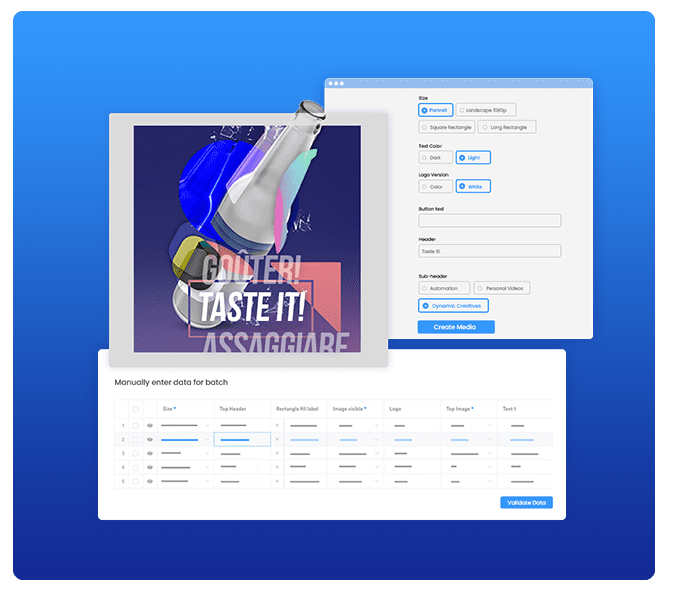
As earlier reflected upon, the consumer of today’s world is different today. Ad fatigue means audience attention is harder to sustain, so engaging content is needed more than ever. Content is still king, but it is about producing the right content at the right time. The rewards are high if content is highly personalised, as this 2023 outlook claims.
Storyteq has been scaling content since 2013, before it branched into Workflow and end-to-end Content Marketing technologies. While Creative Automation was a successful standalone product, expanding its offering was a natural next step as more and more clients requested end-to-end features for their marketing operations. Creative Automation is the process of leveraging technology to scale your creative asset production by automatically adapting and changing certain aspects of your videos, banners or images, for digital and print. This could include the size, format, Calls to Action, text or any other graphic elements such as icons or logos. The use of dynamic templates with swappable elements in turn enables high-volume content creation for the present-day demand, while simultaneously increasing testing capacity.
The campaigns which are briefed and planned in the Workflow Management part of the platform are next designed (with a template-thinking mindset) and adapted, if the marketers wish, for unlimited channels, markets, touchpoints or audiences.
Activate with Brand Portals (within Creative Automation)
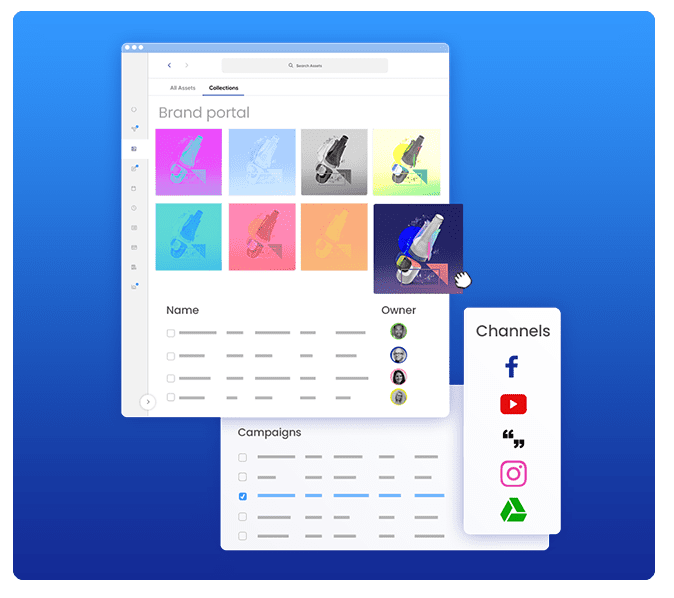
Launching campaigns in local markets can be slow and complex. An absence of clear guidelines or steps for creating campaigns in a local market can sometimes result in inconsistent messaging. Confused campaigns will equal confused customers who consequently aren’t sure if your products or services are dependable either.
With Brand Portals, on-brand campaigns can be rolled out in every market and channel, faster. Local marketers are empowered by their customisable hub which contains all their campaign materials in one place. These branded pages include ready-to-use branded assets, on-demand dynamic templates and campaign guidelines with clear dos and don’ts that detail exactly how to deploy a campaign. Content can be activated in an instant, with the security that it is hitting the right mark.
This in turn curbs brand dilution and rather strengthens a brand’s identity globally.
Wrapping up
The consumer has evolved. New contexts require new approaches, as one size fits no one anymore.
For brands to better succeed in this fully connected world, they must become more dynamic. In Storyteq terms, dynamic means ‘swappable’, where certain visual elements can be easily changed within a template. To be dynamic in this ever-changing digital landscape, a brand’s strategies and processes must also be ‘swappable’.
Your operating model needs to have a competitive edge. Swapping to a Content Marketing platform will help to bridge the Marketing Execution Gap that so many brands are suffering from today.
Not only does the innovation of a Content Marketing platform make the lives of marketing and creative teams easier, but it allows brands to become future-proof in the face of an ever-changing digital advertising landscape. It is the end-to-end solution for an end-to-end problem.
Learn more about Storyteq’s Content Marketing platform (with a full Creative Automation engine at its heart).